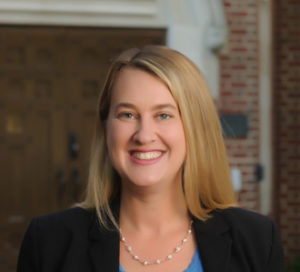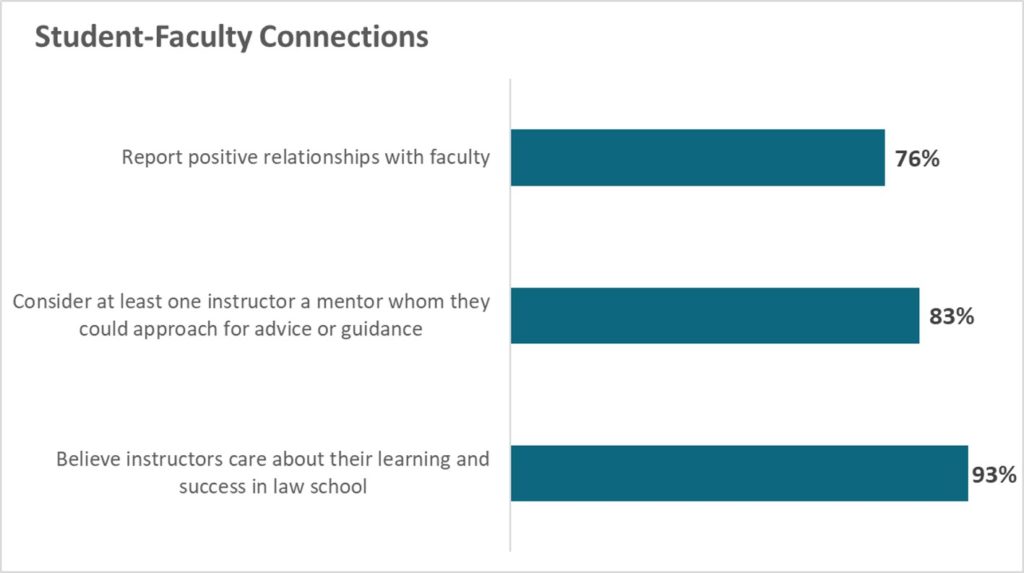Guest Post: Connections and Community in Distanced Classrooms
 Jessica Erickson
Jessica Erickson
Professor & Associate Dean for Faculty Development
University of Richmond School of Law
Law faculty put significant thought into designing courses. We draft learning objectives, carefully craft assessments, and consider how to engage students inside and outside of the classroom. When law school courses suddenly moved online, many faculty had to think about a new aspect of course design how to build connections in classrooms where students were remote. Even in classes that were able to meet in-person, many of us found it difficult to develop a classroom community when students were in masks and seated six feet apart.
When we could no longer have casual conversations with students after class or in the hallways, many of us realized just how crucial these connections are for our students and for us. In this blog post, I discuss the importance of relationships to student learning and outcomes, as well as how to develop these relationships in online, hybrid, or physically distanced classes.
- The Importance of Relationships
Connections and community are essential to student learning. As I have previously discussed, research from undergraduate institutions shows that a sense of community is associated with increased motivation, greater enjoyment of classes, and more effective learning. Crucially, data from the Law Student Survey of Student Engagement (LSSSE) shows that these connections matter to law students as well. LSSSE data has been used to examine both the inputs and outputs of law students’ sense of belonging. Using LSSSE data, we can gain insight into what causes law students to feel a sense of belonging (inputs) and the impact that a sense of belonging has on law students’ performance in law school and their career (outputs).
Starting with inputs, LSSSE’s 2018 report Relationships Matter surveyed more than 18,000 students at 72 law schools. The report concludes: “Relationships with faculty, administrators, and peers are among the most influential aspects of the law student experience. These connections deepen students’ sense of belonging and enhance their understanding of class work and the profession.” Connections, in other words, are key when it comes to fostering law students’ sense of belonging. Law schools are doing a good job at developing connections, with 83% of students stating that they have at least one faculty member whom they could approach for advice or guidance.

When it comes to outputs, we can look at research by Professor Victor D. Quintanilla using LSSSE data. He found that a sense of belonging significantly predicted three key outputs – (1) students’ overall experience in law school, (2) whether they would choose to go to law school again, and (3) their academic success (i.e., law school GPA). Moreover, not only does a student’s sense of belonging predict academic performance, but the impact was even greater than other commonly used predictors such as undergraduate GPA and LSAT scores. This means that, even if students come to law school with different academic backgrounds, we can help close this gap by fostering our students’ sense of belonging.
Unfortunately, the research also suggests that building this sense of community is much harder in online or hybrid courses, which most of us who taught this past fall can probably confirm. Now we need to think even more deliberately about how to develop these connections in our classes.
- Building Relationships in Remote or Physically Distanced Classrooms
This past summer, I wrote two blog posts, one with suggestions on how faculty can connect with students in these new learning environments and the other with suggestions on how faculty can help students connect with each other. In this post, I want to reflect back on these strategies now that I have tried many of them with my own students.
First, I found office hours to be a key way to connect with students. I renamed my office hours “student hours” on the advice of a colleague, and I borrowed language from this same colleague to include in my syllabus: “I call these ‘student hours’ for a reason: they are for you. You should come to these student hours if you have a question about the course, but you can also just stop by to introduce yourself, ask any other questions, or talk about your law school experience. I want to get to know you!” At the start of each meeting, I talked with students about how law school was going, and it was a great opportunity to get to know them better.
I call these ‘student hours’ for a reason: they are for you. You should come to these student hours if you have a question about the course, but you can also just stop by to introduce yourself, ask any other questions, or talk about your law school experience. I want to get to know you!
Second, I used technology to connect with students individually. I asked each of my students to create their own Google Doc and share it with me, and they were required to compete short pre-class assignments in their Google Docs. I’ve used this strategy in the past, and found it to be a great way to make sure that students understand the reading. This semester, though, I set aside 1-2 hours before each class to include personal comments on each students’ assignments. I had 52 students across two classes, so it took a while, but it allowed us to connect more personally. I also gave them “Just for Fun” optional questions to include in their Google Doc where they could tell me their favorite board game or share a picture of their pet. I featured a few at the start of class, which was a fun way to personalize a class full of masked students. You can read more about my pre-class assignments here.
Third, several of my colleagues set up individual and small-group meetings with students. One colleague held individual “office hours” with each student. Another who taught a hybrid class met separately with all of her students who were fully remote. A third held online coffee breaks with 3-4 students at a time where the only rule was that they could not talk about course material.
Fourth, optional events allowed me to connect with students in a more relaxed way. In class, I was often preoccupied with the day’s material and all of the tech challenges of my hybrid classroom. In optional events, however, we could talk and connect in a lower-stakes way. I held an optional discussion about a Supreme Court oral argument. I also held review sessions and a Civil Procedure game night where students competed in an online kahoot! If you’ve never tried a kahoot!, I strongly recommend it. It was a great way to let students test their knowledge and have fun at the same time.
Finally, I created opportunities for students to connect with each other. Many faculty were not sure whether students could work in groups six feet apart and wearing masks. It turns out that students can work together pretty easily even under these circumstances. Although it was tempting to incorporate more individualized assessments to keep students separated, it’s important to give them opportunities to deepen their learning with each other. I sometimes felt like a middle school dance chaperone reminding students to stay an appropriate distance apart, but it was worth it.
The final thing I will add is that we need to be careful that our efforts to connect with students do not overwhelm them or us. It is tempting for these community-building exercises to be added on top of what we already ask our students to do in our courses. Now that we have some experience in these new classroom settings, we can be a bit more selective in what we choose to include and assess whether we need to scale back in other areas. At the end of the day, though, as LSSSE data has shown us, relationships matter, and we need to think about how to cultivate these relationships even in these unusual times.
